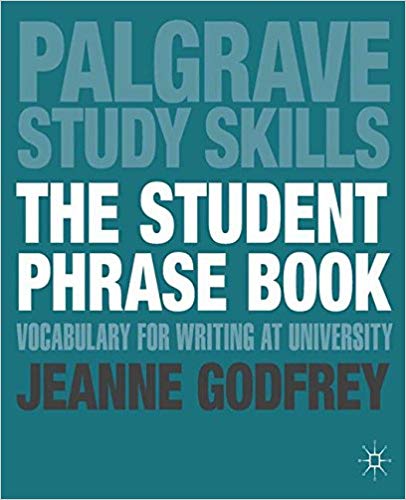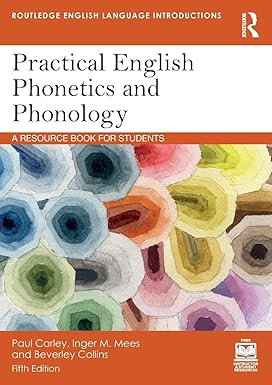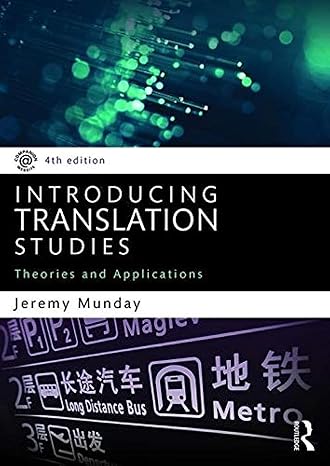This concise phrase book is an essential tool for all students who want to communicate their ideas, arguments and evaluations clearly and precisely. Featuring over a thousand words common to most academic disciplines, it will help students to expand their vocabulary, understand how these words are used and spot mistakes in their own academic writing. Chapters present the words in full sentences, enabling users to see exactly how they are used, and also include additional information on context, connotation and collocations.
This is an ideal reference guide for students of all disciplines and levels who are required to complete written assignments as part of their course. It is also a valuable resource for students looking to fine tune their vocabulary for job searches, interviews and writing for professional purposes.
چکیده فارسی
این کتاب عبارات مختصر یک ابزار ضروری برای همه دانشآموزانی است که میخواهند ایدهها، استدلالها و ارزیابیهای خود را واضح و دقیق بیان کنند. دارای بیش از هزار کلمه مشترک در اکثر رشته های دانشگاهی، به دانش آموزان کمک می کند تا دایره لغات خود را گسترش دهند، درک کنند که این کلمات چگونه استفاده می شوند و اشتباهات را در نوشتار دانشگاهی خود تشخیص دهند. فصلها کلمات را در جملات کامل ارائه میکنند، و به کاربران امکان میدهند دقیقاً نحوه استفاده از آنها را ببینند، و همچنین شامل اطلاعات اضافی در مورد زمینه، مفهوم و ترکیببندیها میشود.
این یک راهنمای مرجع ایدهآل برای دانشآموزان همه رشتهها و سطوحی است که باید تکالیف کتبی را به عنوان بخشی از دوره خود تکمیل کنند. همچنین منبع ارزشمندی برای دانش آموزانی است که به دنبال تنظیم دقیق واژگان خود برای جستجوی شغل، مصاحبه و نوشتن برای اهداف حرفه ای هستند.
ادامه ...
بستن ...
Ebook details:
عنوان: The Student Phrase Book: Vocabulary for Writing at University (Macmillan Study Skills)
نویسنده: Jeanne Godfrey
ناشر: Red Globe Press; 2013 edition (May 17, 2013)
زبان: English
شابک: 0230289339, 978-0230289338
حجم: 5 Mb
فرمت: True Pdf
ادامه ...
بستن ...
Cover; Contents; Introduction; Introducing, defining and classifying; 1 Introducing your topic; 2 Giving brief definitions; 3 Classifying and describing characteristics; Talking about aim and proposition; 4 Stating your aim, proposition and scope; 5 Talking about proposition, assumption, thesis and theory; Structure, time, sequence and frequency; 6 Ordering and structuring your ideas and argument; 7 Time, sequence, duration and frequency; Methodology and method, findings, size, amount, level and proportion; 8 Describing your methodology and method. 9 Presenting initial data and findings, and stating problems and anomalies10 Size, amount, level, capacity, proportion and ratio; Movement and change, getting better or worse, allowing or preventing and eliminating; 11 Movement, change, trend and tendency; 12 Getting better or worse, bringing back or taking away, encouraging or deterring; 13 Allowing or preventing, avoiding, excluding, cancelling out and eliminating; Circumstance, advantage or disadvantage, presence or absence, and importance; 14 Circumstance, occurrence, normality, norm, deviance, risk and threat. 15 Advantage or disadvantage, plenty or too much, enough or not enough, presence or absence16 Importance, relevance, influence and impact; Communication, expression, understanding, way of thinking and point of view; 17 Communication, expression, signification and portrayal; 18 Knowledge, understanding, perception, way of thinking and belief; 19 Position, point of view, support and opposition, impartiality and bias; Cause and effect, dependency, similarity and difference; 20 Cause and effect, derivation, requirement, compatibility, reciprocity and dependency. 21 Equivalence, similarity, difference and diversityAnalysing and evaluating ideas; 22 Analysing ideas and suggesting common themes; 23 Comparing the views of different authors and describing how they cite and evaluate each other; 24 Evaluating an author's ideas positively; 25 Evaluating an author's ideas negatively; Drawing your own conclusions, stating your own position and summarising your ideas; 26 Suggesting counterarguments, conceding, disagreeing, drawing your own conclusions and generating your own ideas. 27 Being precise about your conclusions and expressing certainty, caution or doubt28 Summarising, restating your ideas, and suggesting ability, potential and future actions; Appendix; Latin abbreviations and phrases; A brief explanation of word class; Index: section headings and subheadings; Index: words and phrases.
ادامه ...
بستن ...










